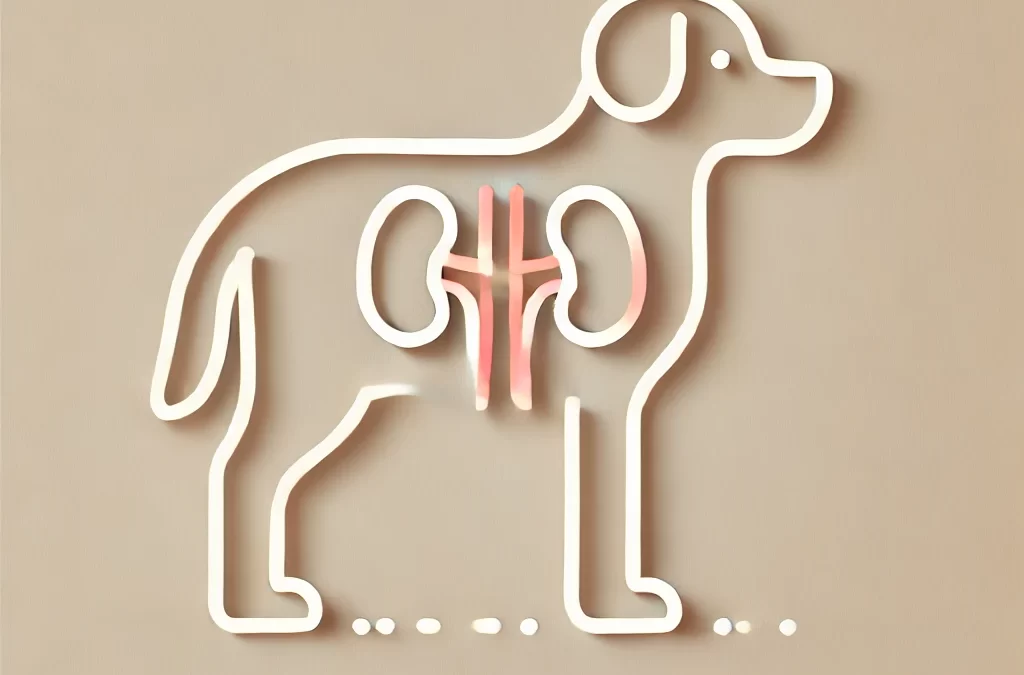
utworzone przez TCMVET | gru 12, 2024 | Rak i guzy u psów
Rak nerki u psów jest stosunkowo rzadki, ale może znacząco wpłynąć na zdrowie psa, gdy już wystąpi. Objawy często pojawiają się stopniowo, co utrudnia wczesne wykrycie. Świadomość potencjalnych objawów może pomóc właścicielom zwierząt domowych w uzyskaniu terminowej opieki weterynaryjnej.
Typowe objawy raka nerki u psów
- Zwiększone pragnienie i oddawanie moczu (polidypsja i poliuria):
- Nadmierne picie alkoholu i oddawanie moczu może wskazywać na upośledzenie funkcji nerek spowodowane guzem.
- Loss of Appetite:
- U psów chorych na raka nerki często obserwuje się spadek apetytu, co prowadzi do utraty wagi.
- Weight Loss:
- Nawet przy normalnym odżywianiu, może dojść do utraty wagi, ponieważ organizm zużywa energię na walkę z chorobą.
- Wymioty i nudności:
- Dysfunkcja nerek spowodowana rakiem może prowadzić do gromadzenia się toksyn we krwi, wywołując problemy żołądkowo-jelitowe.
- Ból lub obrzęk brzucha:
- Guzy mogą powodować widoczny obrzęk i dyskomfort przy dotykaniu brzucha.
- Krew w moczu (krwiomocz):
- Mocz może mieć różowy lub czerwony kolor z powodu krwawienia z guza.
- Lethargy:
- U psów chorych na raka nerki może wystąpić obniżony poziom energii i niechęć do podejmowania normalnych czynności.
- Difficulty Breathing:
- W zaawansowanych przypadkach guzy mogą uciskać otaczające narządy, powodując problemy z oddychaniem.
- Jasne dziąsła:
- Niedokrwistość, często związana z rakiem nerki, może powodować bladość dziąseł.
- Nieświeży oddech (oddech mocznicowy):
- Nagromadzenie toksyn we krwi spowodowane upośledzoną pracą nerek może być przyczyną zapachu przypominającego amoniak.
Kiedy udać się do lekarza weterynarii
Jeśli u Twojego psa występuje jakakolwiek kombinacja tych objawów, konieczne jest natychmiastowe zwrócenie się o pomoc do weterynarza. Chociaż objawy te nie dotyczą wyłącznie raka nerki, często wskazują na poważny problem zdrowotny, który wymaga diagnozy i leczenia.
Diagnostyka raka nerki u psów
W celu potwierdzenia raka nerki lekarz weterynarii zazwyczaj stosuje następujące metody:
- Badanie lekarskie: Aby wykryć obrzęk lub dyskomfort.
- Analiza moczu: Aby sprawdzić, czy w moczu nie ma krwi lub substancji nieprawidłowych.
- Badania krwi: Aby ocenić funkcję nerek i wykryć wszelkie nieprawidłowości.
- Obrazowanie: Badanie ultrasonograficzne, rentgenowskie lub tomografia komputerowa mogą pomóc w identyfikacji guzów i określeniu ich rozległości.
- Biopsja: W celu potwierdzenia rodzaju guza można pobrać próbkę.
Leczenie i rokowanie
Opcje leczenia zależą od rodzaju i stopnia zaawansowania nowotworu, ale mogą obejmować:
- Chirurgia: Usunięcie chorej nerki (nefrektomia), jeśli rak jest zlokalizowany.
- Chemioterapia: W przypadku niektórych rodzajów raka chemioterapia może spowolnić postęp choroby.
- Opieka wspomagająca: Leczenie bólu, nawodnienie i wsparcie żywieniowe w celu utrzymania jakości życia.
Wczesne wykrycie poprawia skuteczność leczenia, dlatego regularne kontrole weterynaryjne są niezwykle ważne, zwłaszcza w przypadku starszych psów.
Rozpoznając te objawy i szybko działając, możesz zapewnić swojemu psu największą szansę na otrzymanie skutecznej opieki i utrzymanie dobrej jakości życia.
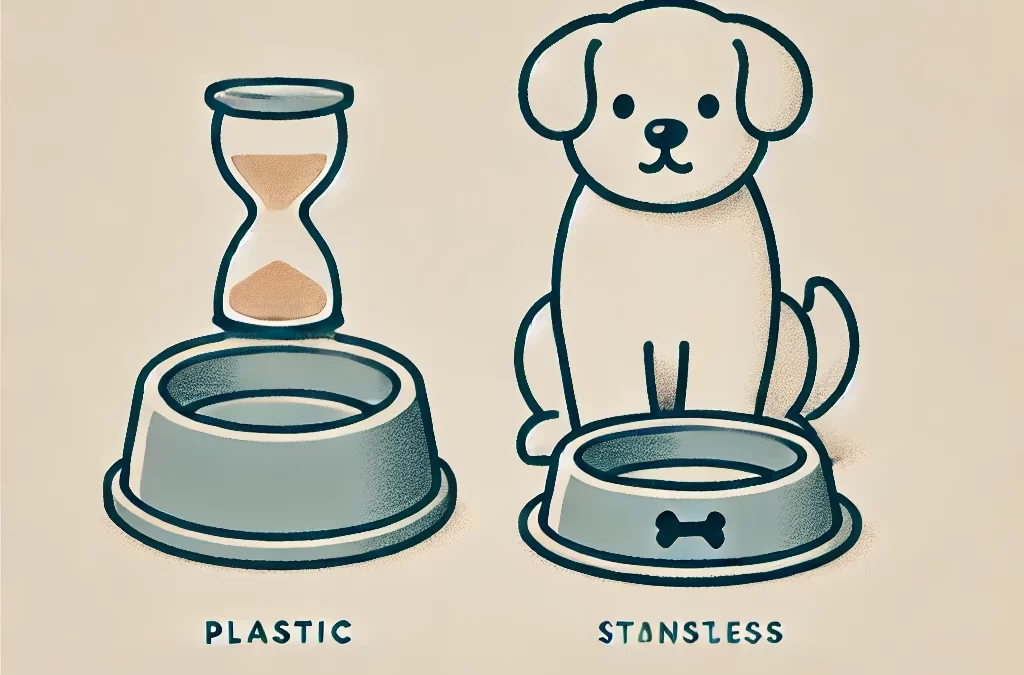
utworzone przez TCMVET | gru 11, 2024 | Rak i guzy u psów
Plastik jest wszędzie w naszym codziennym życiu, od pojemników na żywność po artykuły gospodarstwa domowego, a nawet w produktach zaprojektowanych dla naszych futrzanych przyjaciół. Ale czy ten pozornie nieszkodliwy materiał może stanowić zagrożenie dla zdrowia naszych psów? Nowe badania sugerują, że długotrwałe narażenie na niektóre rodzaje plastiku może zwiększać ryzyko zachorowania na raka u psów. Przyjrzyjmy się nauce i temu, co właściciele zwierząt domowych mogą zrobić, aby chronić swoje pupile.
Ukryte zagrożenia związane z tworzywami sztucznymi
Wiele rodzajów plastików zawiera szkodliwe substancje chemiczne, takie jak bisfenol A (BPA), ftalany i polichlorek winylu (PVC). Te substancje chemiczne są często używane do nadawania plastikowi trwałości, elastyczności lub przezroczystości. Mogą jednak przedostawać się do żywności, wody, a nawet środowiska, zwłaszcza gdy plastik jest podgrzewany, zarysowywany lub degradowany.
U zwierząt te substancje chemiczne mogą działać jako substancje zaburzające gospodarkę hormonalną, zakłócając funkcjonowanie hormonów. Długotrwała ekspozycja może prowadzić do zmian komórkowych, stresu oksydacyjnego, a nawet powstawania guzów, zwiększając prawdopodobieństwo zachorowania na raka. W przypadku psów, których codzienne nawyki często obejmują żucie, lizanie i bliski kontakt z różnymi materiałami, ryzyko jest spotęgowane.
Codzienne źródła kontaktu psów z plastikiem
- Miski na jedzenie i wodę:Wielu właścicieli psów nieświadomie używa plastikowych misek, które mogą uwalniać szkodliwe substancje, zwłaszcza jeśli zostaną porysowane lub wystawione na działanie promieni słonecznych.
- Zabawki do żucia:Zabawki plastikowe niskiej jakości często zawierają materiały nieobjęte regulacjami, które mogą stwarzać ryzyko w przypadku połknięcia lub długotrwałego żucia.
- Opakowanie:Przysmaki dla psów, sucha karma i inne produkty są często przechowywane w opakowaniach plastikowych, z których mogą przedostawać się do żywności substancje chemiczne.
- Artykuły gospodarstwa domowego:Psy często mają kontakt z plastikowymi przedmiotami w domu, od pojemników po meble.
Ryzyko zachorowania na raka związane z plastikiem
Podczas gdy bezpośrednie powiązania między narażeniem na plastik a rakiem u psów są nadal przedmiotem badań, dowody z badań na ludziach i zwierzętach wskazują na niepokojący związek. U psów nowotwory, takie jak guzy piersi, rak jąder i chłoniak, mogą być pod wpływem toksyn środowiskowych, w tym tych znajdujących się w plastiku. Mniejsze rasy lub psy z wcześniej istniejącymi problemami zdrowotnymi mogą być szczególnie narażone.
Kroki mające na celu ograniczenie narażenia na plastik
Właściciele zwierząt domowych mogą podjąć działania zapobiegawcze, aby zminimalizować narażenie swojego psa na szkodliwe tworzywa sztuczne:
- Przejdź do Safer Bowls: Do jedzenia i wody używaj misek ze stali nierdzewnej, ceramiki lub szkła, a nie plastikowych.
- Wybierz zabawki wysokiej jakościWybieraj zabawki nietoksyczne, wolne od BPA lub wykonane z naturalnych materiałów, takich jak guma.
- Przemyśl przechowywanie: Przechowuj karmę i przysmaki dla psów w szczelnych pojemnikach wykonanych ze szkła lub stali nierdzewnej, zamiast pozostawiać je w oryginalnym plastikowym opakowaniu.
- Sprawdź swój dom:Ogranicz dostęp psa do przedmiotów z tworzyw sztucznych niskiej jakości, które mógłby pogryźć lub połknąć.
- Unikaj podgrzewania plastików:Nigdy nie podgrzewaj w kuchence mikrofalowej jedzenia ani smakołyków w plastikowych pojemnikach, gdyż wysoka temperatura przyspiesza wypłukiwanie substancji chemicznych.
Wspieranie bezpieczniejszych standardów
Oprócz osobistych wyborów, właściciele zwierząt domowych mogą orędować za lepszymi standardami bezpieczeństwa w branży produktów dla zwierząt domowych. Wspieranie marek, które stawiają na nietoksyczne materiały i zrównoważone praktyki, wysyła silny komunikat. Ponadto, pozostawanie poinformowanym o wycofaniach produktów lub pojawiających się badaniach może pomóc chronić psa przed ukrytymi ryzykami.
Szerszy obraz
Chociaż plastik jest wszechobecny w nowoczesnym życiu, nie można ignorować jego potencjalnego wpływu na zdrowie. Dla naszych psów ograniczenie narażenia na szkodliwe plastiki jest prostym, ale skutecznym sposobem na wspieranie ich długoterminowego zdrowia i dobrego samopoczucia. Podejmując świadome wybory i szerząc świadomość, możemy zapewnić naszym pupilom szczęśliwsze, zdrowsze życie.
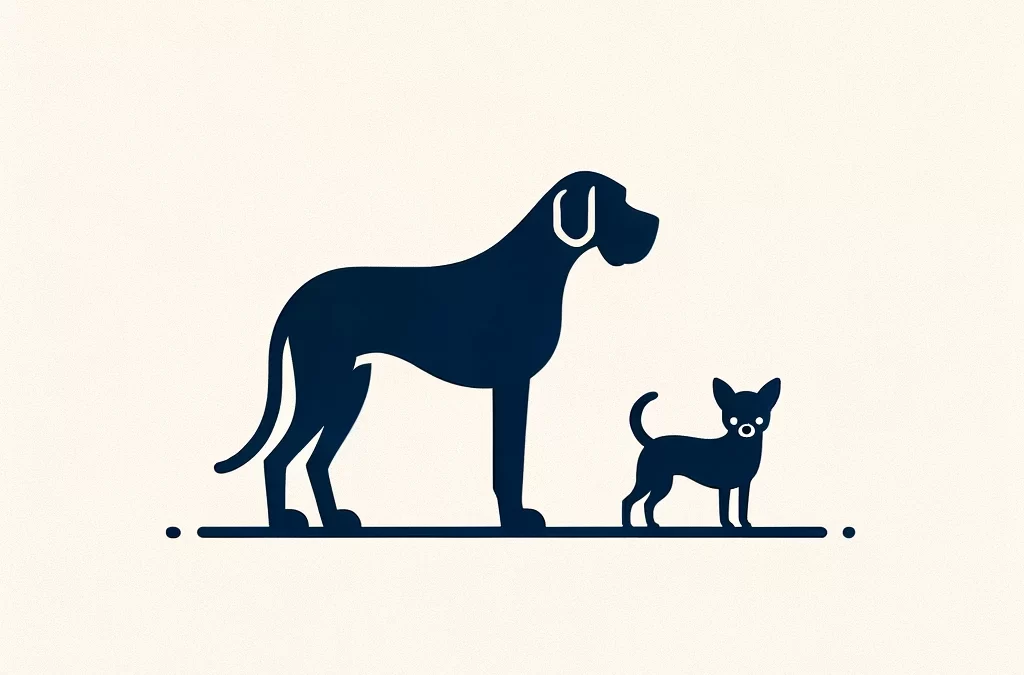
utworzone przez TCMVET | gru 11, 2024 | Rak i guzy u psów
Jeśli chodzi o psy, rozmiar ma znaczenie — ale nie tylko w sposób, w jaki zazwyczaj myślimy. Podczas gdy duże psy są podziwiane za swoją siłę, a małe za swój urok, ostatnie badania ujawniły zaskakujący związek między rozmiarem psa a ryzykiem zachorowania na raka. Przyjrzyjmy się temu intrygującemu powiązaniu i sprawdźmy, co oznacza ono dla właścicieli zwierząt domowych.
Nauka o rozmiarze i ryzyku zachorowania na raka
Badania wykazały, że większe rasy, takie jak dog niemiecki, berneński pies pasterski i rottweiler, są bardziej podatne na niektóre nowotwory w porównaniu do swoich mniejszych odpowiedników. Ale dlaczego? Odpowiedź leży w biologii. Duże psy rosną szybciej i mają więcej komórek w swoich ciałach. Ta zwiększona aktywność komórkowa zwiększa prawdopodobieństwo mutacji, które mogą prowadzić do raka.
Z drugiej strony małe rasy, takie jak chihuahua i jamniki, mają tendencję do niższego ryzyka zachorowania na raka, ale nie są całkowicie odporne. Niektóre nowotwory, takie jak guzy komórek tucznych, mogą nadal dotykać mniejsze psy, często z powodu predyspozycji genetycznych, a nie rozmiaru.
Szybki wzrost: miecz obosieczny
Duże rasy doświadczają szybkich skoków wzrostu w okresie szczenięcym, co powoduje ogromne obciążenie ich ciała. Ten szybki wzrost może skutkować mniej stabilnym podziałem komórek, co zwiększa ryzyko nieprawidłowego zachowania komórek w czasie. Ponadto zapotrzebowanie metaboliczne większych psów może przyspieszyć starzenie się, czyniąc je bardziej podatnymi na choroby, w tym raka, w miarę starzenia się.
Długowieczność i ryzyko zachorowania na raka
Małe psy często żyją znacznie dłużej niż duże rasy. Podczas gdy ta długowieczność daje małym psom więcej czasu na rozwój chorób związanych z wiekiem, oznacza to również, że ich wolniejszy wzrost i obrót komórkowy mogą chronić je przed wczesnymi nowotworami powszechnie występującymi u większych ras. Z kolei krótsza długość życia większych psów często koreluje z większą częstością występowania agresywnych nowotworów w młodszym wieku.
Co mogą zrobić właściciele zwierząt domowych
Właściciele zwierząt domowych mogą podejmować proaktywne kroki, aby zminimalizować ryzyko zachorowania na raka, niezależnie od wielkości psa. Regularne kontrole weterynaryjne, zbilansowana dieta i odpowiednie ćwiczenia są niezbędne. W przypadku dużych ras należy zwrócić szczególną uwagę na utrzymanie zdrowej wagi, ponieważ otyłość może dodatkowo zwiększyć ryzyko zachorowania na raka. Małe psy, chociaż mniej podatne na nowotwory związane z rozmiarem, nadal korzystają z badań genetycznych w celu wczesnego wykrycia ryzyka dziedzicznego.
Nowe zdefiniowanie „Rozmiar ma znaczenie”
Związek między rozmiarem a ryzykiem zachorowania na raka rzuca nam wyzwanie, byśmy przemyśleli nasze podejście do opieki nad psami. Chociaż nie możemy zmienić rozmiaru psa, zrozumienie, jak wpływa on na jego zdrowie, może pomóc nam podejmować świadome decyzje. Od wyboru rasy po dostosowywanie rutyny opieki, ta wiedza pozwala właścicielom zwierząt domowych dać swoim futrzanym przyjaciołom najlepszą szansę na długie, zdrowe życie.
Ostatecznie, niezależnie od tego, czy jest duży czy mały, każdy pies zasługuje na miłość, uwagę i proaktywną opiekę zdrowotną. Dzięki informowaniu się możemy wszyscy odegrać rolę w zmniejszeniu ryzyka zachorowania na raka i zapewnieniu naszym psim towarzyszom dobrego samopoczucia.
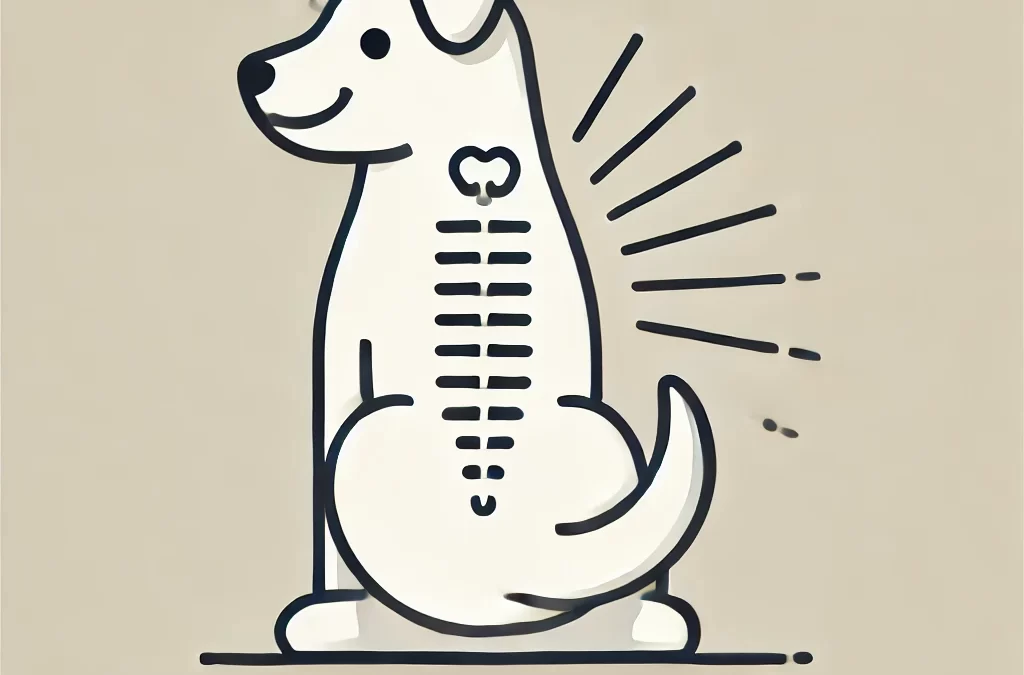
utworzone przez TCMVET | gru 9, 2024 | Rak i guzy u psów
Guzy kręgosłupa u psów, choć rzadkie, mogą poważnie wpłynąć na ich mobilność i jakość życia. Guzy te mogą rozwijać się w obrębie lub wokół kręgosłupa, wpływając na funkcjonowanie układu nerwowego. Wczesne wykrycie i właściwe leczenie są niezbędne do zapewnienia najlepszej opieki Twojemu futrzanemu przyjacielowi. Oto kompleksowy przewodnik po rodzajach guzów kręgosłupa u psów oraz ich objawach, przyczynach i opcjach leczenia.
Najczęstsze rodzaje guzów kręgosłupa u psów
- Guzy śródrdzeniowe
- Opis: Te guzy powstają w samym rdzeniu kręgowym. Często powstają z komórek glejowych, które podtrzymują układ nerwowy.
- Przykłady: Gwiaździaki, wyściółczaki i oligodendrogliomy
- Objawy: Stopniowe osłabienie, brak koordynacji, a w ciężkich przypadkach możliwy paraliż
- Leczenie: Zabieg chirurgiczny (jeśli to możliwe), radioterapia i leczenie wspomagające
- Guzy zewnątrzoponowe
- Opis: Guzy te występują poza rdzeniem kręgowym, ale wewnątrz kanału kręgowego, często uciskając rdzeń i powodując problemy neurologiczne.
- Przykłady: Mięsaki kości, włókniakomięsaki i chłoniaki
- Objawy: Ból pleców, trudności z chodzeniem i osłabienie mięśni
- Leczenie: Usunięcie chirurgiczne, chemioterapia lub radioterapia, w zależności od rodzaju guza
- Guzy wewnątrztwardówkowe i zewnątrzrdzeniowe
- Opis: Guzy te zlokalizowane są w kanale kręgowym, ale poza rdzeniem kręgowym. Rozwijają się w otaczających oponach mózgowych lub korzeniach nerwowych.
- Przykłady: Guzy oponiakowe, guzy osłonek nerwowych (nerwiaki osłonkowe)
- Objawy: Ból, brak koordynacji i możliwe nietrzymanie moczu lub stolca
- Leczenie: Chirurgia i radioterapia
- Guzy kręgosłupa
- Opis: Guzy te rozwijają się w kościach kręgosłupa, powodując niestabilność strukturalną i potencjalny ucisk rdzenia kręgowego.
- Przykłady: Mięsak kostny, chrzęstniakomięsak
- Objawy: Silny ból, obrzęk i trudności ze staniem lub chodzeniem
- Leczenie: Chirurgia, chemioterapia i leczenie bólu
Symptoms of Spinal Tumors in Dogs
Objawy guzów kręgosłupa mogą się różnić w zależności od umiejscowienia i rozmiaru guza. Do typowych objawów zalicza się:
- Niechęć do ruchu i zabawy
- Trudności z chodzeniem lub przeciąganiem kończyn
- Ból lub wrażliwość pleców lub szyi
- Utrata kontroli nad pęcherzem lub jelitami
- Nagłe zmiany w zachowaniu lub postawie
Przyczyny i czynniki ryzyka
Guzy kręgosłupa u psów mogą być spowodowane przez:
- Genetyczne predyspozycje: Niektóre rasy, np. owczarki niemieckie i golden retrievery, mogą być narażone na większe ryzyko.
- Age: U starszych psów ryzyko wystąpienia guzów kręgosłupa jest większe.
- Przerzuty nowotworowe: Guzy z innych części ciała mogą rozprzestrzeniać się na kręgosłup.
Diagnostyka i leczenie
Lekarze weterynarii stosują kilka metod diagnozowania guzów kręgosłupa:
- Badanie neurologiczne: Ocenia odruchy, koordynację i reakcję na ból.
- Obrazowanie: Zdjęcia rentgenowskie, rezonans magnetyczny lub tomografia komputerowa w celu zlokalizowania i oceny guza.
- Biopsja: Potwierdza typ guza w celu zastosowania leczenia celowanego.
Opcje leczenia obejmują:
- Chirurgia: Preferowana metoda w przypadku guzów dostępnych i operacyjnych.
- Radioterapia: Stosowany w przypadku guzów nieoperacyjnych lub resztkowych po zabiegu chirurgicznym.
- Chemioterapia: Skuteczny w leczeniu niektórych przerzutowych i pierwotnych nowotworów kręgosłupa.
- Leczenie bólu: Niezbędne dla poprawy jakości życia psa.
Wspieranie psa w okresie rekonwalescencji
Opieka nad psami z guzami kręgosłupa powinna obejmować:
- Zapewniamy miękkie, wspierające łóżko zapobiegające powstawaniu odleżyn
- Pomoc w poruszaniu się za pomocą uprzęży lub wózków
- Utrzymywanie odżywczej diety w celu wspierania ogólnego stanu zdrowia
- Regularne wizyty kontrolne u lekarza weterynarii w celu monitorowania postępów
Wnioski
Guzy kręgosłupa u psów wymagają natychmiastowej uwagi i specjalistycznej opieki. Podczas gdy rokowanie zależy od rodzaju guza i jego zaawansowania, postęp medycyny weterynaryjnej sprawił, że leczenie stało się skuteczniejsze. Rozumiejąc objawy i dostępne opcje, możesz zapewnić swojemu psu najlepszą opiekę i wsparcie.
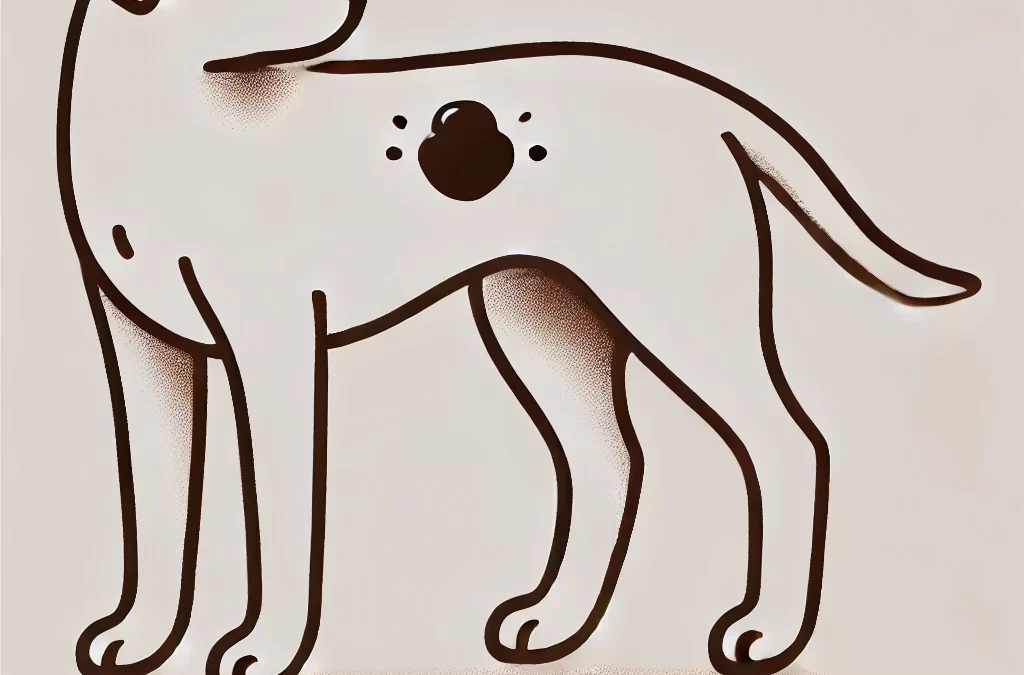
utworzone przez TCMVET | gru 9, 2024 | Rak i guzy u psów
Zdrowie skóry u psów jest często odbiciem ich ogólnego samopoczucia, jednak niektóre schorzenia mogą być zagadkowe nawet dla najbardziej uważnych właścicieli zwierząt domowych. Jednym z takich rzadkich schorzeń jest nabłoniak rogowaciejący, rodzaj łagodnego guza skóry, który może budzić obawy ze względu na swój wygląd i skutki. Przyjrzyjmy się bliżej tej niezwykłej chorobie dermatologicznej, jej przyczynom, metodom leczenia i temu, co czyni ją wyjątkowym wyzwaniem w opiece zdrowotnej nad psami.
Czym są nabłoniaki rogowaciejące?
Nabłoniaki rogowaciejące to łagodne guzy, które powstają w gruczołach łojowych, a konkretnie w nabłonku (komórkach skóry) odpowiedzialnych za produkcję keratyny. Guzy te często występują jako guzkowate, brodawkowate narośla na skórze psa. Chociaż nie zagrażają życiu, ich potencjał do wywoływania dyskomfortu lub infekcji oznacza, że nie należy ich ignorować.
Jakie są przyczyny powstawania nabłoniaków rogowaciejących?
Dokładna przyczyna powstawania nabłonka rogowaciejącego nie jest w pełni poznana, ale czynnikami sprzyjającymi mogą być:
- Genetyczne predyspozycje: Rasy takie jak cocker spaniele, beagle i husky syberyjskie są bardziej podatne na powstawanie tego typu narośli.
- Zaburzenia równowagi hormonalnej: Aktywność gruczołów łojowych może ulegać zmianom pod wpływem zmian hormonalnych, zwłaszcza u starszych psów.
- Niedobory dietetyczne: Niedożywienie może prowadzić do zaburzeń zdrowia skóry, potencjalnie zaostrzając schorzenia takie jak nabłoniak.
Rozpoznawanie objawów
Nabłoniak rogowaciejący zazwyczaj objawia się jako:
- Małe, twarde guzki o brodawkowatej fakturze
- Żółtawy lub woskowy kolor z powodu nagromadzenia się keratyny
- Zlokalizowane wokół głowy, szyi lub pleców, ale mogą wystąpić w dowolnym miejscu
- Czasami towarzyszy temu zaczerwienienie lub stan zapalny, jeśli dojdzie do zakażenia wtórnego
Choć zmiany te są łagodne, nagłe zmiany wielkości, koloru lub tekstury powinny zostać ocenione przez lekarza weterynarii w celu wykluczenia nowotworu złośliwego.
Diagnozowanie nabłoniaków rogowaciejących
Diagnoza zazwyczaj obejmuje:
- Badanie lekarskie: Lekarz weterynarii oceni wielkość, umiejscowienie i wygląd narośli.
- Biopsja aspiracyjna cienkoigłowa (FNA): Pobiera się próbkę komórek i poddaje ją analizie w celu potwierdzenia rodzaju guza.
- Biopsja: W niektórych przypadkach biopsja może okazać się konieczna w celu odróżnienia łagodnych nabłoniaków od innych chorób skóry lub nowotworów.
Opcje leczenia
Leczenie zależy od stopnia zaawansowania nabłoniaków i ich wpływu na jakość życia psa.
- Monitorowanie
W przypadku małych, niesprawiających problemów narośli, regularne monitorowanie jest często wystarczające.
- Upewnij się, że obszar ten jest czysty i wolny od infekcji.
- Jeśli zaleci to lekarz weterynarii, stosuj łagodzące środki miejscowe.
- Usuwanie chirurgiczne
Jeśli narośla powodują dyskomfort, nawracające infekcje lub problemy natury estetycznej, powszechnym rozwiązaniem jest ich chirurgiczne usunięcie.
- Minimalnie inwazyjne techniki, takie jak chirurgia laserowa, mogą skrócić czas rekonwalescencji.
- Terapie miejscowe i ogólnoustrojowe
- Retinoidy i suplementy witaminy A mogą regulować produkcję keratyny.
- W przypadku wtórnych zakażeń bakteryjnych mogą zostać przepisane antybiotyki.
Innowacyjne i naturalne podejścia
Dla właścicieli, którzy chcą uzupełnić konwencjonalne metody leczenia opieką holistyczną:
- Kwasy tłuszczowe omega-3: Mogą one zmniejszyć stan zapalny i poprawić ogólny stan skóry.
- Leki ziołowe: Nagietek i aloes łagodzą podrażnienia.
- Korekty dietetyczne: Dieta bogata w przeciwutleniacze i wysokiej jakości białka wspomaga regenerację skóry.
Środki zapobiegawcze
Mimo że nie wszystkim przypadkom nabłonka rogowaciejącego można zapobiec, poniższe kroki mogą pomóc w utrzymaniu optymalnego zdrowia skóry:
- Regularna pielęgnacja: Utrzymuje skórę w czystości i pozwala na wczesne wykrywanie nieprawidłowości.
- Zbilansowana dieta: Wspomaga układ odpornościowy i zmniejsza ryzyko wystąpienia problemów skórnych.
- Rutynowe wizyty weterynaryjne: Wczesna interwencja jest kluczowa w leczeniu wszelkich chorób skóry.
Wyjątkowe wyzwanie w dermatologii psów
Nabłoniaki rogowaciejące podkreślają znaczenie zrozumienia i leczenia nawet rzadkich schorzeń u psów. Choć łagodne, te narośla mogą mieć wpływ na komfort i wygląd Twojego pupila, co sprawia, że szybkie i skuteczne leczenie jest niezbędne. Dzięki informowaniu się i ścisłej współpracy z lekarzem weterynarii możesz zapewnić, że Twój pies pozostanie zdrowy, szczęśliwy i dobrze prosperujący.





